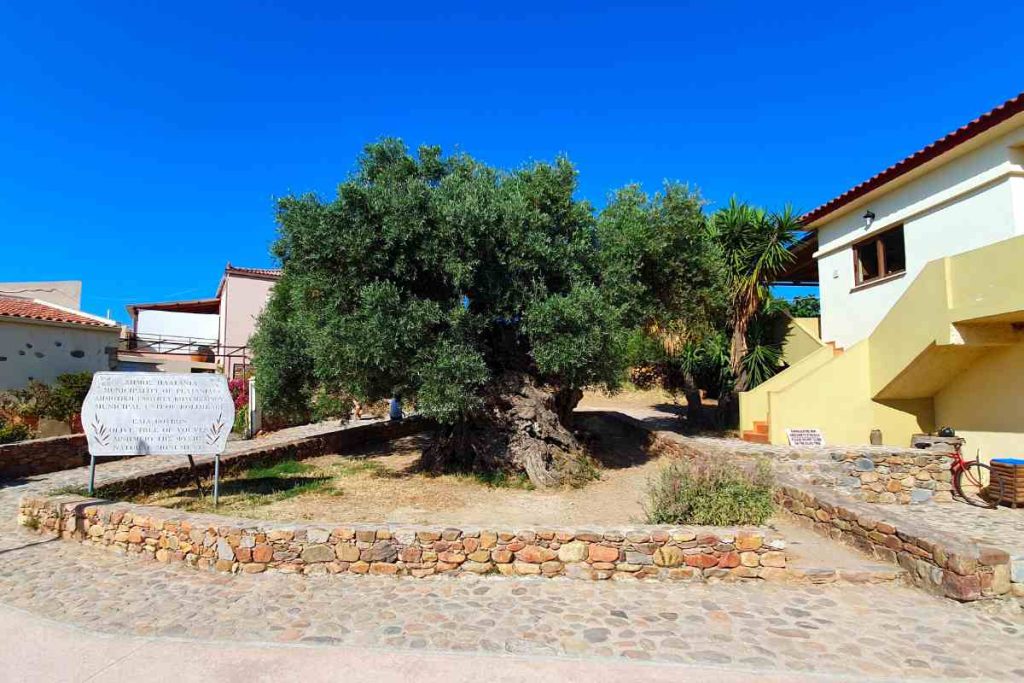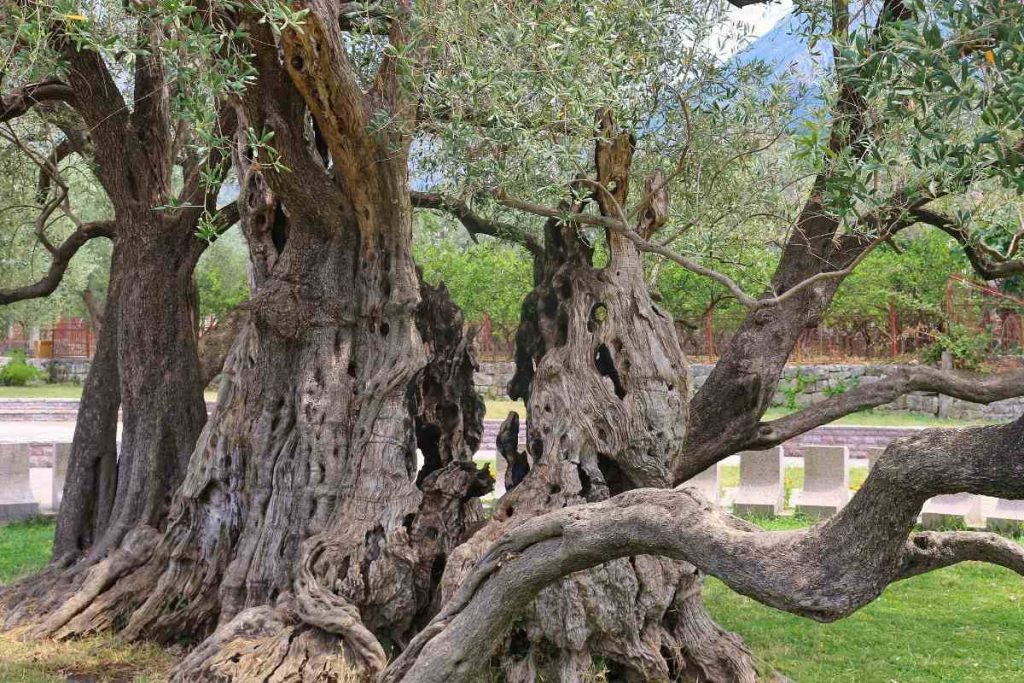The Olivastro Millenario Trees, also known as the Millennium Olive Trees, are a group of ancient olive trees that hold great cultural and historical significance. These trees are estimated to be over 2,000 years old and are located in the Mediterranean region, particularly in countries such as Spain, Italy, and Greece. The name “Olivastro” comes from the Latin word “oliva,” meaning olive, and “astro,” meaning star, which reflects the majestic and timeless nature of these trees.
These ancient olive trees have witnessed centuries of human history and have become iconic symbols of the Mediterranean landscape. They have survived wars, natural disasters, and the passage of time, making them living witnesses to the past. The exact origins of these trees are often unknown, but they are believed to have been cultivated by ancient civilizations such as the Greeks and Romans.
Table of Contents
The Significance of the Olivastro Millenario Trees
The Olivastro Millenario Trees hold immense cultural and historical importance. They are living relics of the past and serve as a reminder of the rich heritage of the Mediterranean region. These trees have been witness to the rise and fall of empires, the birth of civilizations, and the passing of generations. They have provided sustenance, shade, and beauty to countless communities throughout history.
In addition to their cultural significance, the Olivastro Millenario Trees also possess unique characteristics that make them ecologically important. These ancient trees have adapted to harsh environmental conditions, such as drought and poor soil quality, making them resilient and long-lived. They provide habitat for a variety of species, including birds, insects, and small mammals. The roots of these trees help prevent soil erosion and their leaves provide organic matter that enriches the soil.
The Threats Facing the Olivastro Millenario Trees

Unfortunately, the Olivastro Millenario Trees face numerous threats that endanger their survival. One of the main threats is human activities, such as logging and development. The demand for olive wood and the expansion of urban areas have led to the destruction of many ancient olive groves. These trees are often cut down to make way for agriculture, infrastructure, or housing, resulting in the loss of their unique genetic material and cultural heritage.
Climate change and natural disasters also pose a significant threat to the Olivastro Millenario Trees. Rising temperatures, droughts, and extreme weather events can weaken these ancient trees and make them more susceptible to diseases and pests. Additionally, natural disasters such as wildfires and floods can destroy entire olive groves, wiping out centuries of history and biodiversity in an instant.
The Importance of Protecting the Olivastro Millenario Trees
The preservation of the Olivastro Millenario Trees is crucial for the conservation of cultural and historical heritage. These trees are living witnesses to the past and hold immense value for future generations. They provide a tangible connection to our ancestors and serve as a reminder of the importance of preserving our natural and cultural heritage.
Furthermore, the conservation of these ancient olive trees is essential for the maintenance of biodiversity and ecosystem services. These trees provide habitat for a wide range of species, including birds, insects, and small mammals. They also contribute to soil fertility, water regulation, and carbon sequestration. By protecting these trees, we are not only preserving a piece of history but also safeguarding the health and well-being of our ecosystems.
The Role of Conservation Efforts in Preserving the Olivastro Millenario Trees
Conservation efforts for the Olivastro Millenario Trees involve both government and non-governmental organizations. Many countries have implemented laws and regulations to protect ancient olive groves and promote sustainable practices. Non-profit organizations and local communities also play a crucial role in raising awareness, conducting research, and implementing conservation projects.
Strategies for protecting the Olivastro Millenario Trees include the establishment of protected areas, the promotion of sustainable agriculture practices, and the development of eco-tourism initiatives. These efforts aim to balance the preservation of cultural heritage with the needs of local communities and the environment. By involving local stakeholders and promoting sustainable practices, conservation efforts can ensure the long-term survival of these ancient trees.
The Cultural and Historical Significance of the Olivastro Millenario Trees
The Olivastro Millenario Trees are not only ancient living beings but also bearers of stories and legends. Throughout history, these trees have been associated with myths, folklore, and religious beliefs. They have been mentioned in ancient texts, depicted in artwork, and celebrated in festivals and ceremonies.
These trees hold great importance to local communities and indigenous peoples. They are often considered sacred and are deeply intertwined with cultural identity. The olive tree has been a symbol of peace, fertility, and abundance for centuries, and its presence in the landscape is a source of pride and connection to the past.
The Unique Characteristics of the Olivastro Millenario Trees
The physical characteristics and adaptations of the Olivastro Millenario Trees make them truly unique. These ancient olive trees have thick, gnarled trunks and twisted branches that give them a majestic and timeless appearance. They have developed deep root systems that allow them to access water in arid conditions and withstand strong winds.
The longevity of these trees is also remarkable. While most olive trees have a lifespan of around 300 years, the Olivastro Millenario Trees can live for over 2,000 years. This longevity is attributed to their slow growth rate, genetic diversity, and ability to regenerate from their roots.
The Ecological Importance of the Olivastro Millenario Trees

The Olivastro Millenario Trees play a crucial role in maintaining biodiversity and providing ecosystem services. These ancient olive trees provide a habitat for a variety of species, including birds, insects, and small mammals. They offer nesting sites, food sources, and shelter, contributing to the overall health and diversity of the ecosystem.
Furthermore, these trees have a significant impact on carbon sequestration and climate regulation. The leaves of the olive tree absorb carbon dioxide from the atmosphere and store it in their tissues. This process helps mitigate climate change by reducing greenhouse gas emissions. Additionally, the shade provided by these trees helps cool the surrounding environment and reduce energy consumption.
The Future of the Olivastro Millenario Trees
The future of the Olivastro Millenario Trees is uncertain, as they continue to face threats and challenges. The demand for olive wood, urbanization, and climate change pose ongoing risks to their survival. Without concerted conservation efforts, these ancient trees may be lost forever, along with their cultural heritage and ecological significance.
However, there is hope for the preservation of these trees. Ongoing conservation efforts, combined with sustainable practices and responsible tourism, can help protect the Olivastro Millenario Trees for future generations. By raising awareness, supporting local communities, and implementing effective conservation strategies, we can ensure the survival of these ancient living beings.
How You Can Help Protect the Olivastro Millenario Trees
There are several ways in which individuals can contribute to the protection of the Olivastro Millenario Trees. One way is to support conservation organizations and initiatives that work towards the preservation of ancient olive groves. Donations, volunteering, and spreading awareness can all make a difference in safeguarding these trees.
Additionally, practicing responsible tourism and sustainable practices can help minimize the impact on these fragile ecosystems. By choosing eco-friendly accommodations, supporting local businesses, and respecting the natural environment, visitors can contribute to the long-term conservation of the Olivastro Millenario Trees.
In conclusion, the Olivastro Millenario Trees are not just ancient olive trees; they are living witnesses to history and bearers of cultural and ecological significance. These trees have survived centuries of human activity and natural disasters, but they now face numerous threats that endanger their survival. The preservation of these ancient trees is crucial for the conservation of cultural heritage, biodiversity, and ecosystem services. By supporting conservation efforts and practicing responsible tourism, we can ensure the survival of these majestic and timeless beings for future generations.
More Sources: The Platanus Orientalis: A Tree That Tells a Story


